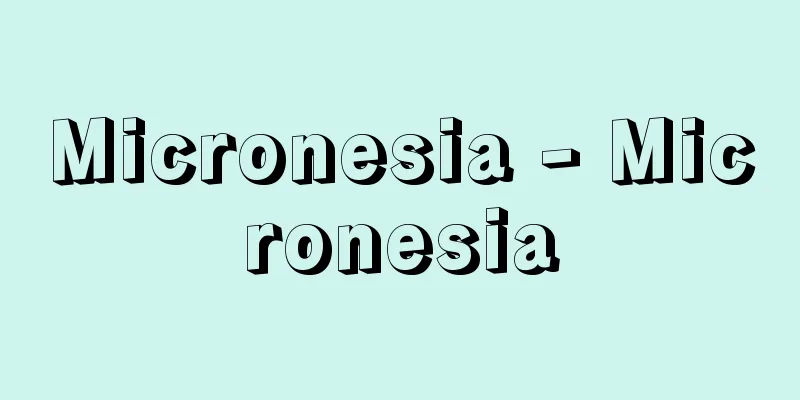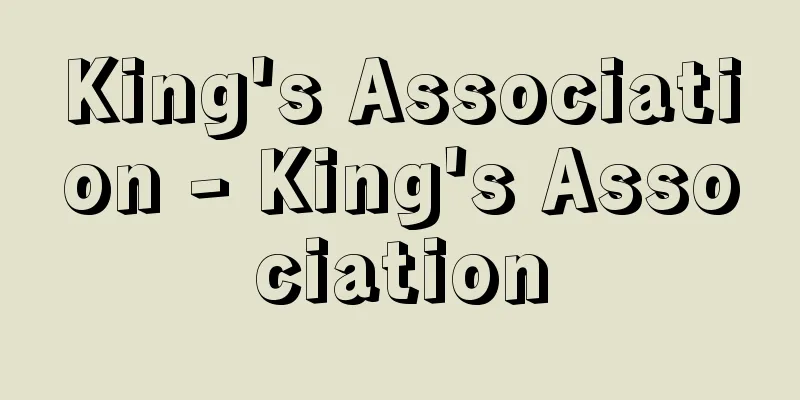Micronesia - Micronesia

|
Micronesia is a group of islands scattered in the Western Pacific Ocean north of the equator. Its ocean area covers 5 million square kilometers, but its total land area is only 3,667 square kilometers. Micronesia means "small islands" and was proposed to the French Geographical Society by Domni de Rienzi in 1831. Along with Melanesia and Polynesia, it has come to be the name of a region that divides Oceania into thirds. Politically, most of the area became part of the Trust Territory of the Pacific after World War II, and also includes Guam, Nauru, Ocean Island, and the Gilbert Islands. Geographically, it is roughly divided into three island groups: the Caroline Islands, the Marshall Islands, and the Mariana Islands. The Caroline Islands have 963 islands with a land area of 2,150 square kilometers, of which the islands of Kosrae, Ponape, Chuuk (Truk), and Yap form the Federated States of Micronesia (established an autonomous government in 1979, became independent in 1986), and the Palau region forms the Republic of Palau (established an autonomous government in 1981, became independent in 1994). The Marshall Islands have about 900 islands but only a land area of 181 square kilometers. These islands also became independent (1986) to become the Republic of the Marshall Islands. The Mariana Islands are made up of 15 major islands, including Guam, with a total land area of 1,020 square kilometers. The islands other than Guam became independent (became a U.S. territory) as the Commonwealth of the Northern Mariana Islands (established an autonomous government in 1978). The Gilbert Islands, which follow the Marshall Islands, have 17 islands including Ocean Island, with a total land area of 295 square kilometers. This island, along with the Phoenix Islands and Line Islands on the Polynesian side, became independent as Kiribati in 1979. Nauru is an isolated island measuring 21 square kilometers. The western half of Micronesia is home to many volcanic islands that rise conspicuously out of the sea along the western edge of the Pacific Circum-Pacific orogenic belt, but east of the Mariana Trench there are many low-lying coral islands, especially atolls. This region was generally reached by Spanish navigators plying their way between Mexico and the Philippines in the early 17th century, and was subsequently colonized by Germany. After World War I it became a Japanese mandate territory, but during World War II it became a fierce battleground between Japan and the United States, and after the war it became a trust territory of the United States. This is a region that has followed a historical course in which American democracy took root, on top of Spanish place names, coconut plantations from the German era, and fishing techniques from the Japanese era. [Jouji Oshima] residentsThe inhabitants are called Micronesians, but they are customarily divided into two groups regardless of their physical differences: those who live in the northern Mariana Islands, which were Christianized early on, are called Chamorros, and those who live on the other southern islands are called Kanakas. Physically, they are shorter than Polynesians, with black-brown hair that is either straight, curly or curly. Skin color changes from dark brown to light brown as one moves from west to east. Linguistically, they belong to the Austronesian family, but Chamoro of the Mariana Islands and Palauan of the Palau Islands belong to the Indonesian (Hesperonesian) family. Marshallese, Ponapean, Truk, O'leai and Gilbertese belong to the Core Micronesian language group and are phylogenetically close to the New Hebrides and Fijian languages of the Melanesian family. According to the findings of linguistics and prehistory, Micronesian culture can be divided into two types: one that migrated from the Philippines and eastern Indonesia to the western edge of Micronesia, namely Palau, Yap, and the Mariana Islands, and the other that moved north from the New Hebrides in Melanesia, through the Gilbert and Marshall Islands, and then to the eastern and central Caroline Islands. These two cultures spread in many small waves and influenced the formation of traditional Micronesian culture. Before contact with Westerners, Micronesians were agriculturalists at the Neolithic stage. Coconuts, breadfruit, bananas, taro, and yams were the main crops, but the coral islands depended more on fishing and breadfruit cultivation, while the volcanic islands depended more on the cultivation of rootstocks such as taro and yams. The different ecological conditions of the coral and volcanic islands have resulted in a diversity of social organizations centered on the division of labor between men and women. With the exception of the Gilbert Islands, which are non-monoline, Micronesia is a matrilineal society in which kinship groups linked to a common ancestor through the matrilineage play a dominant role. However, there is a contrast between the eastern and central regions, where the dispersed matrilineal extended family is the norm, and the western region, where the concentrated matrilineal small family is the norm. Politically, various forms of chiefdom political organizations have developed, centering on the control of land and sea and the offering of first fruits. There are great differences, such as the island of Yap, which controlled a tribute and trade network over a vast area of sea backed by religious authority, the island of Ponape, which developed a "potlatch" style prestige economy, the chiefdom of Kosrae, the Marshall Islands, where stratification progressed with the emergence of powerful chiefs, and the Chuuk Islands, which remained at the level of kinship hierarchy. An important part of Micronesian social life is the existence of men's quarters, such as meeting halls, youth hostels, and clubhouses. Sometimes these are combined into a single building, but in any case they serve as places for religious and political activities as well as accommodation for unmarried men. In contrast, there were menstruation huts for women. The coral islands of the Caroline and Marshall Islands formed a kind of symbiotic relationship with neighboring islands and volcanic islands, and the people of these islands developed knowledge and skills related to navigation, and developed long-distance voyages in outrigger canoes, which have floats attached to one side of the hull. [Iwao Ushijima] [Reference] |Source: Shogakukan Encyclopedia Nipponica About Encyclopedia Nipponica Information | Legend |
|
西太平洋のうち、赤道以北の部分に散在する島々。海域は500万平方キロメートルに及ぶが、陸地総面積はわずか3667平方キロメートルにすぎない。ミクロネシアとは「小さい島々」という意味で、1831年ドムニ・デ・リエンツィがフランス地理学協会に提案した名称であるが、メラネシア、ポリネシアという名称とともに、オセアニアを三分する地域名となった。政治的には、大部分が第二次世界大戦後、太平洋信託統治諸島となった地域で、ほかにグアム島、ナウル、オーシャン島、ギルバート諸島が含まれる。地理的には、大きくカロリン諸島、マーシャル諸島、マリアナ諸島の三つの島嶼(とうしょ)群に分けられる。カロリン諸島には963の島嶼があり、陸地面積2150平方キロメートル、このうちコスラエ、ポナペ、チューク(トラック)、ヤップの各島群はミクロネシア連邦(1979自治政府発足、1986独立)を構成、パラオ地区はパラオ(ベラウ)共和国(1981自治政府発足、1994独立)となっている。マーシャル諸島は島嶼の数では約900もありながら陸地面積は181平方キロメートルにすぎない。この諸島も独立(1986)してマーシャル諸島共和国となっている。マリアナ諸島はグアム島を含む主要な15の島数で合計1020平方キロメートル。グアムを除く各島は北マリアナ連邦(1978自治政府発足)として独立(アメリカ自治領化)した。マーシャル諸島に続くギルバート諸島はオーシャン島を含めて17島、295平方キロメートル。これはポリネシア側のフェニックス諸島、ライン諸島などとともにキリバスとして独立(1979)した。ナウルは21平方キロメートルの孤島である。 ミクロネシアの西半は環太平洋造山帯の西縁に沿って海上に目だつほどそびえる火山島も多いが、マリアナ海溝以東はサンゴ礁からなる低平な小島とくに環礁が多い。この地域は全般的に17世紀初頭スペインの航海者たちがメキシコとフィリピンの間を往復していてここに到達、その後ドイツの植民地時代が続いた。第一次世界大戦後は日本の委任統治領となったが、第二次世界大戦では日本とアメリカの間の激戦地となり、戦後アメリカの信託統治領となっていたという歴史をもつ。スペイン系の地名、ドイツ時代のココヤシのプランテーション、日本時代の漁業技術などのうえに、いわゆるアメリカ民主主義が定着したという歴史的経過をたどった地域である。 [大島襄二] 住民住民はミクロネシア人とよばれているが、形質の異同とは無関係に二大別して呼び習わされており、早くからキリスト教化された北部のマリアナ諸島に居住する人々をチャモロ人、それ以外の南部の島々に居住する人々をカナカ人という。 身体的特徴は、ポリネシア人より低身長で、頭髪は黒褐色で直状毛、巻毛や縮毛もみられる。皮膚の色は、西から東に移るにつれて暗褐色から淡褐色になる。言語的にはオーストロネシア語族に属するが、マリアナ諸島のチャモロ語、パラオ諸島のパラオ語は、系統上はインドネシア語派(ヘスペロネシア語派)に属する。マーシャル、ポナペ、トラック、オレアイの諸語およびギルバート語は、中核ミクロネシア語群に属し、系統上はメラネシア語派のニュー・ヘブリデス諸語やフィジー語に近い。 言語学、先史学の成果によれば、ミクロネシアの文化は、フィリピン、東インドネシア方面から、西縁ミクロネシアのパラオ、ヤップ、マリアナ諸島に移入してきた文化と、メラネシアのニュー・ヘブリデス諸島付近から北上して、ギルバートおよびマーシャル諸島を経て、東・中カロリン諸島に伝わった文化とに区別される。この二つの文化は何回もの小さな波となって波及し、ミクロネシアの伝統文化の形成に影響を与えた。 西欧人と接触する以前のミクロネシア人は、新石器文化の段階にある農耕民であった。ココヤシ、パンノキ、バナナ、タロイモ、ヤムイモなどが主要作物であったが、サンゴ島では漁労とパンノキ栽培への依存度が高く、火山島ではタロイモ、ヤムイモなどの根茎栽培への依存度が高い。サンゴ島と火山島との異なる生態条件は、それぞれの島で、男女の分業を軸とする社会組織を多様なものにしている。非単系社会であるギルバート諸島を除けば、ミクロネシアは母系を通じて共同の祖先につながりをもつ親族集団が支配的な役割を演じる母系制社会である。しかし、散村形態をとる母系妻方居住婚拡大家族が支配的な東部、中央部地域と、集村形態をとる母系夫方居住婚小家族が支配的な西部地域とは対照的である。 政治的には、土地と海の統制と初物献納を軸とする多様な形態の首長制政治組織が発達している。宗教的権威を背景に広大な海域に及ぶ貢納・交易網を支配したヤップ島、「ポトラッチ」的威信経済を発達させたポナペ島、コスラエ島の首長国、有力な首長の出現に伴って階層化の進んだマーシャル諸島、親族的序列の域にとどまっているチューク諸島など差異は大きい。 ミクロネシアの社会生活上で大きな役割を果たしているのは、男子集会所、若者宿、クラブハウスなどの男子舎屋の存在である。これらは一つの建物に融合していることもあるが、いずれにせよ、祭政の場であるとともに、未婚男子の合宿所である。これに対し、女子用には月経小屋が存在した。 カロリン諸島やマーシャル諸島のサンゴ島では、近隣の島々や火山島と一種の共生関係が結ばれ、これらの島民間では航海に関する知識と技術が発展し、船体の一側にフロートをつけたアウトリガー・カヌーによる遠洋航海を発達させた。 [牛島 巖] [参照項目] |出典 小学館 日本大百科全書(ニッポニカ)日本大百科全書(ニッポニカ)について 情報 | 凡例 |
<<: Micronesian - Micronesian (English spelling)
>>: Microtome - Microtome (English spelling)
Recommend
Duranty (English spelling) Louis Émile Edmond Duranty
1833‐80 French art critic and novelist. Born in Pa...
Weldability
...Therefore, the characteristics of welds are a ...
Hydrolysis constant - Hydrolysis constant
The equilibrium constant for the hydrolysis of th...
Ryutaro Iwabuchi
...During the Taisho era, many renowned performer...
Karim Allah - Karim Allah
...Taking advantage of the failure of the domesti...
Spinning wheel - Itokuriguruma
〘 noun 〙 A wheel used to separate thread from coco...
Hoopoe (English spelling) - hoopoe
A bird of the Upupidae family in the order Coracii...
Medieval Hebrew
…It was probably in the second half of the 1st ce...
Ferenczi (English spelling) Sandor Ferenczi
1873‐1933 Hungarian psychoanalyst. One of S. Freud...
crucian carp
...A general term for freshwater fish of the genu...
Ying (English spelling)
The capital of the state of Chu in the Spring and ...
False clamps
…In horseshoe crabs, the first leg (chelicera) an...
stylus force
...Among the performance characteristics of equip...
Outside Pocket
... Designer G. Chanel also added pockets to suit...
Bird watching
This was a job title seen in the Edo Shogunate an...









